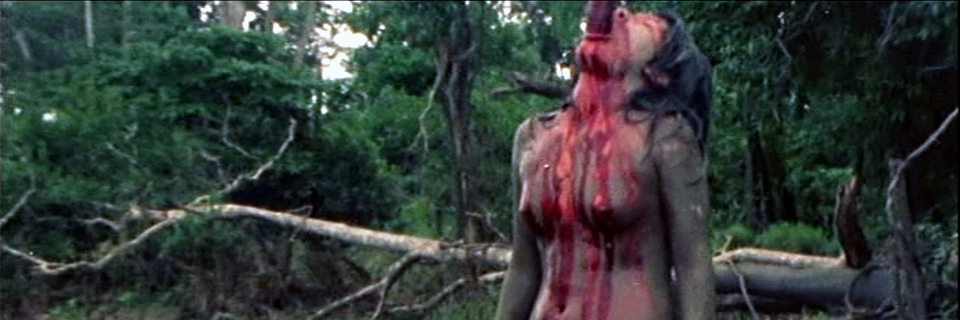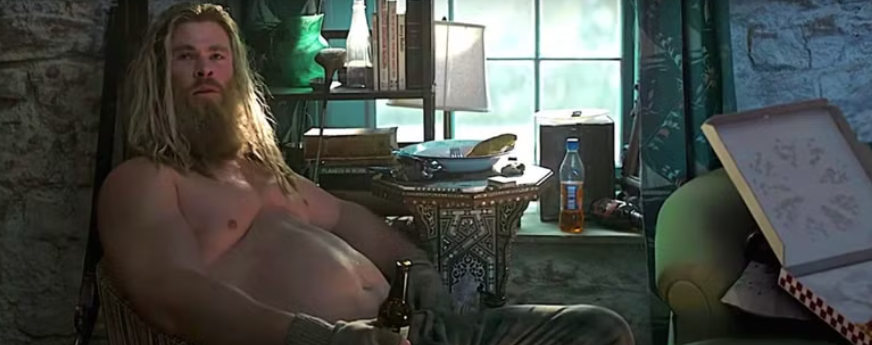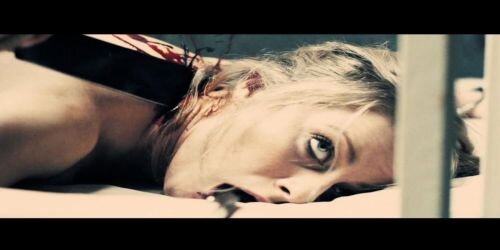Some movies push the envelope, while other movies tear up the envelope, put it through a shredder, and do so without worrying about how they will be perceived by the mainstream. This is what the following movies have done and they are – infamously or not – embedded into the DNA of cinema history because of the provocative emotions they riled up in me, not just among moviegoers, but also among government censors and seats of political power. They depict various forms of violence, in such unique, but morally questionable ways, that hundreds of years from now people will be studying these movies to compare our reactions towards them between then and now.

Cannibal Holocaust (1980)
The violence is so brutal in this Italian exploitation film that some people thought it was real. Controversy arose over Cannibal Holocaust‘s graphic depiction of the clash between a tribe in the Amazon jungle and an American film crew shooting in their remote area. The film is an amalgam of disturbing visuals meant to shock our senses. Sexual violence, animal cruelty, and cannibalism figure among the more gore-inducing moments, but the biggest shocker was the rumor that the movie was a “snuff film,” and that its actors were actually killed on camera. This was not true, but people believed it enough that director Ruggero Deodato went to court without his actors coming to his defense. Why didn’t they? They signed a confidentiality agreement prior to the film’s release stating that they wouldn’t appear in any type of media in order to make the film look even more realistic.
Rambo (2008)
When Sylvester Stallone decided to bring back Rambo for one last go-around in 2008, he wasn’t joking around. This time, John Rambo is given the task of saving a group of missionaries held captive in a remote area by a militant Burmese regime. Once missionaries are killed and revenge enters the equation, there are many horrific images to behold: Rambo liquifies dozens of bad guys with a mounted Gatling gun and literally disembowels another, just in case you missed anatomy class that night.

Irreversible (2001)
Directed by Gaspar Noe, Irreversible is so violent that even the strong-stomached might not be able to fully watch it. Roger Ebert once said that it was “a movie so violent and cruel that most people will find it unwatchable.” The movie features a graphic, single-take nine and a half minute rape scene, featuring Italian superstar Monica Bellucci, that had people enraged at Noe. It wasn’t just the rape scene, but other violent acts that are depicted as well. In one particularly brutal scene, one man bludgeons another to death with a fire extinguisher, crushing his skull, and Noe refuses to cut away. There are no limits to what can be depicted in cinema, and Noe wants to make sure you remember that.
The Passion of the Christ (2004)
Mel Gibson isn’t scared of showing violence in the movies he directs. Apocalypto and Braveheart could have both been on this list, but instead, we’ll settle for The Passion of the Christ. The Bible isn’t tame on violence and the film makes us well aware of that, recounting Jesus’ final days of suffering before his ultimate crucifixion. There are only three sentences in the Bible that mention the flogging of Jesus and yet Gibson dedicates more than 10 minutes of screentime to Jesus getting whipped until he collapses. The crucifixion scene isn’t any better, as Gibson apparently wants the audience to feel the pain as much as possible. However, Gibson has stated that he believes that The Bible describes a far more horrific crucifixion than the movie. The film is shocking, extreme, and tries to make you see them – as the director of the film has stated – “enormity of the sacrifice”. The brutality onscreen had audiences not only seeing the sacrifice but feeling it as well.
A Serbian Film (2010)
This appropriately-titled Serbian movie was banned in so many European countries that you might as well give yourself into police if you are in possession of the DVD on that continent. Rape, murder, necrophilia, and child abuse figure prominently in the film’s plot, which centers around a porn star who mistakenly ends up in a pornographic “snuff” film. The most disturbing moment in the film is so disturbing that we can’t even mention it here, but trust us when we say you need to have a strong stomach and a will of steel to sit through it. Its filmmakers have claimed that the violence is politically motivated, as it denounces the failures of Serbia’s post-communist regime. You be the judge.
Salo, or 120 Days of Sodom (1975)
The title says it all, doesn’t it? This 1975 art film directed by Pier Paolo Pasolini is based on The 120 Days of Sodom by the Marquis de Sade. The film revolves around the disturbing kidnappings of eighteen children by the fascist Libertines, who subject their victims to murder, forced sexual acts and sadism. Martin Scorsese has argued over the years that film has “artistic merit” and many other auteurs have liberally defended the film and its director. Paolini tried to explore persistent, relevant themes such as political corruption, abuse of power, and fascism. Criterion released it as part of their collection in 2011. This was Pasolini’s final film, as he was murdered shortly before its release.
I Spit On Your Grave (1978/2010)
A woman vacations in the woods, but is captured by a group of men who take turns raping her. In most movies, she would be killed and that would be the end of that, but in a twist of fate, she manages to escape … barely. Revenge is a dish best served cold and both versions of this movie bring a whole new meaning to that term. The escapee ends up taking her own revenge by killing each rapist one by one in the cruelest and unusual ways imaginable. There’s a beer-bottle assault, an ingenious castration, and a very memorable stabbing. Many have seen the film as a critique of feminism, while others saw it as a feminist critique. No matter what you think of the movie, it still haunts viewers to this day. The 2010 remake is just as shocking, upping the ante in some scenes and polishing up the female-empowerment message to fit with the 21st century.
The Human Centipede II (2009)
One could argue that “Human Centipede” and “A Serbian Film” are examples of cinematic violence for the sake of violence, regardless of their respective filmmakers’ intended motives. At least, that’s the opinion held by the films’ detractors, who believed the imagery within both pictures was grounds for both censorship and outright banning. “The Human Centipede” in particular gained attention in the mainstream due to its outrageous premise: a mad scientist sews kidnapped victims, mouth-to-anus, to create a perverse new being. The film itself is actually quite tame compared to its two sequels, however, both of which make the OG “Human Centipede” appear positively neutered.
Hostel: Part II (2007)
As violent as the first Hostel movie got, it never reached the torturous peaks of its sequel. Three female American college students are traveling abroad in eastern Europe, when they are lured, kidnapped, and offered to sadistic members of an underground business that allows customers to buy people for torture and murder. There is sadism and gore, but ultimately, Roth seems to have an overall of shocking his audience in whichever way necessary. The film was so graphic that The House of Commons of the United Kingdom stated that it could possibly be illegal to possess stills of the film, as it may count as “extreme pornography”. Most of the blame lies on scenes that depict misogynistic and violent behavior towards women.
Pink Flamingos (1972)
What John Waters was trying to say with this movie. It IS vile and -yes- it IS repulsive but it's also hilarious. I cringed many times and I was disgusted plenty but there's something amusing in a film that takes pride in its main character eating shit and having random - and rather- strange orgasms. It's all real. John Waters shot this for a measly $ 10,000 and it shows.Pink Flamingos never got a wide release -for good reason- gaining its notoriety year by year, baby step by baby step. It was only shown at midnight screenings and was called all the names in the book- described as pornography, The film was banned in Australia, some provinces in Canada and Norway. In some fashion many people- myself included- are as fascinated by the backstory than the actual film itself. It's not exactly a work of art nor is it a recommended movie- in fact, I'd rather not watch it ever again. But for the Jackass crowd this is somewhat of a tempting film to absorb- literally- and its a true milestone in midnight cinema.









